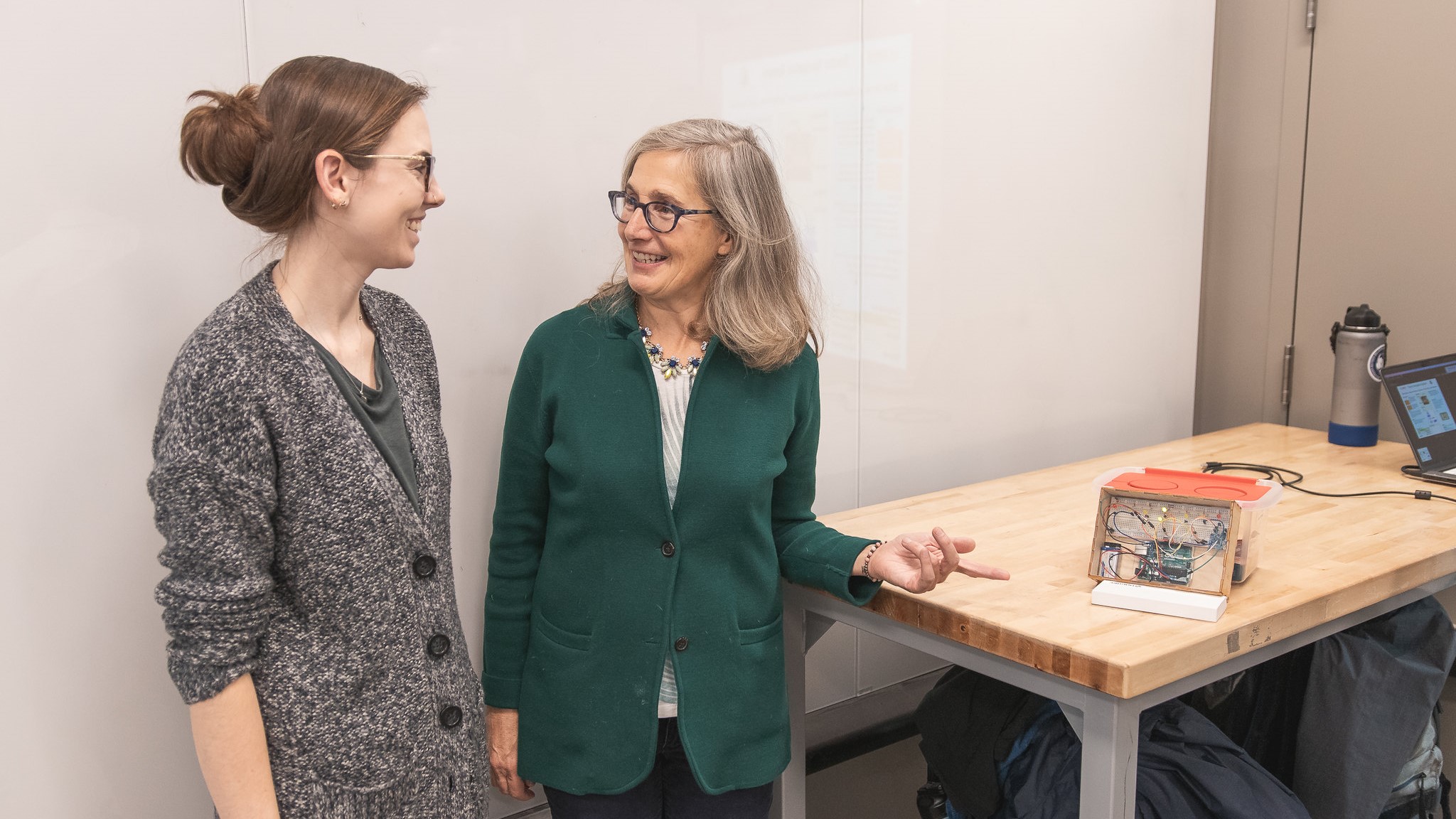
Jennifer Mullin: Teaching Engineering Design
Assistant Professor of Teaching Jennifer Mullin has found a home in the Department of Biological and Agricultural Engineering (BAE). As the instructor for the College of Engineering’s Introduction to Engineering Design course (ENG 3), she pursues her passion for teaching, creativity and design while researching new methods of instruction to train the next generation of engineers.
ENG 3 gives first-year engineering students hands-on design experience for real-world applications. The course teaches them how to work in multidisciplinary teams and use basic engineering tools to design, prototype and present a project in just 10 weeks to solve a problem for the UC Davis Student Farm and other real-world clients.
“You would think that after working with the student farm for two years, they would’ve done it all, but the student ingenuity is amazing,” she said. “It’s really fun to watch.”
Teaching Real World Skills
Mullin joined the department and took over the course in fall 2017, thrilled by the opportunity of a research position focused on teaching. Since then, she has transformed ENG 3 into one of the college’s most popular undergraduate courses.
ENG 3 not only trains students to work in teams and use ubiquitous devices such as arduinos, raspberry pi’s, laser cutters and 3D printers to design prototypes, but it also teaches them the communication skills necessary to succeed in the work force. Mullin gives students communication assignments throughout the quarter that include PowerPoint presentations, elevator pitches, technical updates and presenting to peers to receive feedback.
This all leads up to a design showcase at the end of the quarter, where students present their ideas and prototypes to the faculty members, graduate students, engineering alumni and industry partners who evaluate their projects
“I enjoy watching students do something they did not think they could do,” she said. “Seeing the growth, confidence, collaboration and creativity that they are able to employ at this showcase is really exciting.”
Continuous Innovation
Teaching the course is a full-time job and then some. Every week, Mullin delivers two lectures to over 200 students and supervises nine two-hour “open studio” sessions in the Dorf Design and Communications Classroom in Kemper Hall, all while coordinating with nine teaching assistants (TAs) to prepare teaching plans and engage with the students.
Mullin never stops innovating as an instructor. Every new set of TAs and students brings new ideas and new challenges they have to work as a team to overcome, finding new ways to connect with students and with each other to teach them the design and communications skills they will need on the job.
“We think like designers,” she said. “We have a lot of ideas, we try a lot of things and then we shift if it doesn’t work. Design thinking has infiltrated this process 100%.”

A Life in Engineering Design
Mullin enjoys, and has always enjoyed, making things. From arts and crafts to building things, she grew up loving the process and has carried that with her throughout her career. She worked as an engineer in the automobile industry for several years, but wanted to work more with people, so she decided to earn a Ph.D. in engineering education at Virginia Tech.
As the first graduate student in the university’s Department of Engineering Education, she had the opportunity to help the university develop new first-year engineering instruction and curriculum.
“That was my first entry into this world of open-ended projects,” she said. She developed other active learning modules and trained TAs, but felt most strongly about these open-ended applied design assignments because they gave students technical skills while teaching them the engineering process. As she was writing her dissertation, she got a job at a project-based high school to learn more and try out her developments firsthand.
“Project-based learning is intensive and difficult, but not impossible, and when done well, offers so many opportunities and rewards,” she said.
After receiving her Ph.D., she worked as an instructor at in Foothill Community College and Santa Clara University before becoming affiliated with the UC Davis Center for Integrated Computing and STEM Education (C-STEM). From there, she heard about the opening in the BAE and successfully applied.
With every new quarter, she looks forward to continuing to teach and adapt the course while finding out how best to teach students through the design process.
“I love engineering because it’s possibility-driven and focused on ‘what can be,'” she said. “It’s my work, but also my greatest joy."
